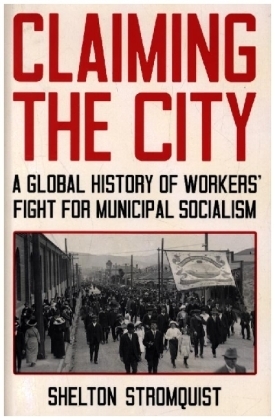Claiming the City elevates a number of lesser-known working-class activists, both men and women, some of whom would otherwise be lost to the archives that Stromquist mines. While the achievements of municipal socialism, culminating in the social housing of 1920s Red Vienna, are viewed primarily as a European phenomenon by most observers, the trials and scattered successes of American socialists also stand out in Stromquist’s account. He favorably compares their efforts to those of their seemingly more left-wing counterparts in Europe, homing in on their repeated efforts to realign party politics in American cities along class lines. They challenged the axis of business associations and state government conservatives determined to quell labor insurgencies and use so-called good government measures to blunt workers’ influence. Like the Populists who combined statist and cooperative economic ideas with biracial organizing, they offered a tantalizing—if never fully realized—contrast to the sectional conflict that national Republicans and Democrats exploited, which had foiled class solidarities between native laborers and newer immigrants, Northerners and Southerners, and white and black workers.
There were other impediments to success, both within the U.S. socialist movement and the party system. Though black socialists such as A. Philip Randolph were influential voices within the movement, Stromquist writes that, overall, “the class-based ‘color-blindness’ of American socialists—the unwillingness of many to take seriously the special burdens of race faced by working people of color—conveniently fit Americans’ resistance to the idea of ‘social equality’ and the wider myopia of socialists worldwide on matters of race.” Meanwhile, the practice of fusionism, which in the 1890s formalized the alliance between Populists and the Democratic Party in federal elections, could just as easily be deployed by local Democratic and Republican elites to frustrate socialist campaigns in municipal elections.
By contrast, political entrepreneurs discontented with party machines could sometimes serve the municipalist agenda. Stromquist places Detroit’s Hazen Pingree and Toledo’s Samuel Jones, both highly unconventional Republicans, along with Democrat Tom Johnson of Cleveland, within the orbit of municipal socialism. While these mayors did not have pronounced ideologies and had been successful businessmen, their stated goals were in many respects the same as socialist Victor Berger’s in Milwaukee. All three advanced what might be called an urban model of populist developmentalism, with municipal ownership of key utilities as well as ample public spaces for working-class families at the center. Their convictions and explicit courtship of urban labor—far less mediated by the backroom deals and traditional emphasis on religion and ethnicity in urban machine politics—foreshadowed the big tent, labor-driven politics of future left-liberal coalitions, from the New Deal to Bernie Sanders’s presidential campaigns.
